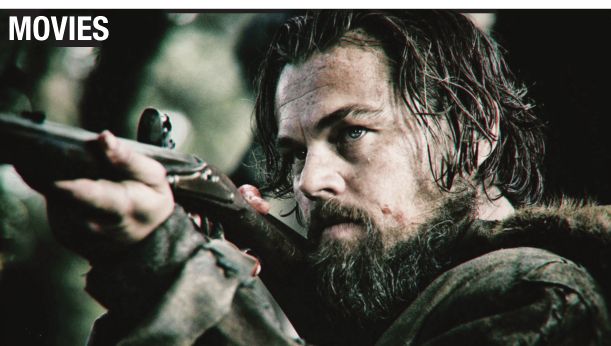
Among experts of the era of western exploration of the United States, the legend of scout Hugh Glass is well known. Having been attacked by a grizzly bear in 1823 while on an expedition in South Dakota for the Rocky Mountain Fur Company, he was left for dead by two comrades who had agreed to stay behind to care for him. Suffering from a broken leg, numerous severe lacerations, a punctured lung and a torn scalp, Glass was somehow able to drag himself to high ground, find shelter and food, fashion a crude raft after reaching the Cheyenne River and float south to safety to Fort Kiowa. Varying accounts place this trip as being anywhere from 80–200 miles in length.
Obviously, Glass’ tale got taller and taller with each telling; some of it credited to the scout himself. Still, if half of what has been attributed to the trapper is true, it’s still quite a tale. Alejandro Gonzalez Inarritu and cowriter Mark L. Smith take a few liberties of their own in The Revenant, using this story as the foundation for an existential study on the limits of human endurance and the will to live.
The film adheres closely to the accepted version of Glass’ experiences; however there are some interesting additions that underscore Inarritu’s overall theme. Accompanying the scout (Leonardo DiCaprio) on the expedition is his son Hawk (Forrest Goodluck). They are the only survivors of a massacre of Pawnee Indians where Glass had sought refuge earlier in his life, marrying a young woman (Grace Dove) whose memory haunts him. The death of his son at the hands of fellow trapper John Fitzgerald (Tom Hardy) is seen here as the impetus for Glass to save himself, with revenge being the motivating factor for his epic journey that sees him meeting a kindly Indian who helps feed and heal him, as well as numerous encounters with a small band of Arikaras who are searching for their chief’s missing daughter.
Inarritu never lacks for ambition where his films are concerned, and this is no exception. Shot in Calgary in natural light, cinematographer Emmanuel Lubezki and the filmmaker create an otherworldly atmosphere, producing a soft dimness that permeates the movie, suggesting an environment that exists between night and day, life and death, much like the state Glass finds himself in. This dreamlike atmosphere and the extended takes that focus solely on the environment are reminiscent of the work of director Terrence Malick (Days of Heaven, The New World) whose films often deal with the symbiotic relationship between environments and the life that exists within them. Symbols of renewal – particularly the Nautilus shell – appear throughout the movie while Glass, haunted by his past and spurred by vengeance, comes to resemble the protagonists in Anthony Mann’s westerns (Winchester ’73, The Naked Spur). Inarritu and Smith balance this hybrid of new and old genre conventions so that one never overshadows the other, giving these well-worn elements new life.
Much has been made of DiCaprio’s performance, a fully invested, physical turn that’s short on dialogue, long on anguish. The actor is fully invested, and it’s been documented that he and much of the crew did their fair share of suffering while on location in harsh conditions. He effectively uses this to convey the sense of physical and emotional pain Glass endures, as DiCaprio does an exceptional job of conveying the man’s inner turmoil and ultimate rebirth with great power and conviction.
Just as in Inarritu’s Birdman, isolation is the film’s underlining theme, as is the belief that it is common for us all to become lost while searching for purpose and meaning. In the end, The Revenant’s most powerful reminder is that life is a precious gift, one that must be cherished and fought for no matter what the cost, a single, guiding sentiment that’s often lost in the forest of our daily trials and troubles.
Contact Chuck Koplinski at [email protected].